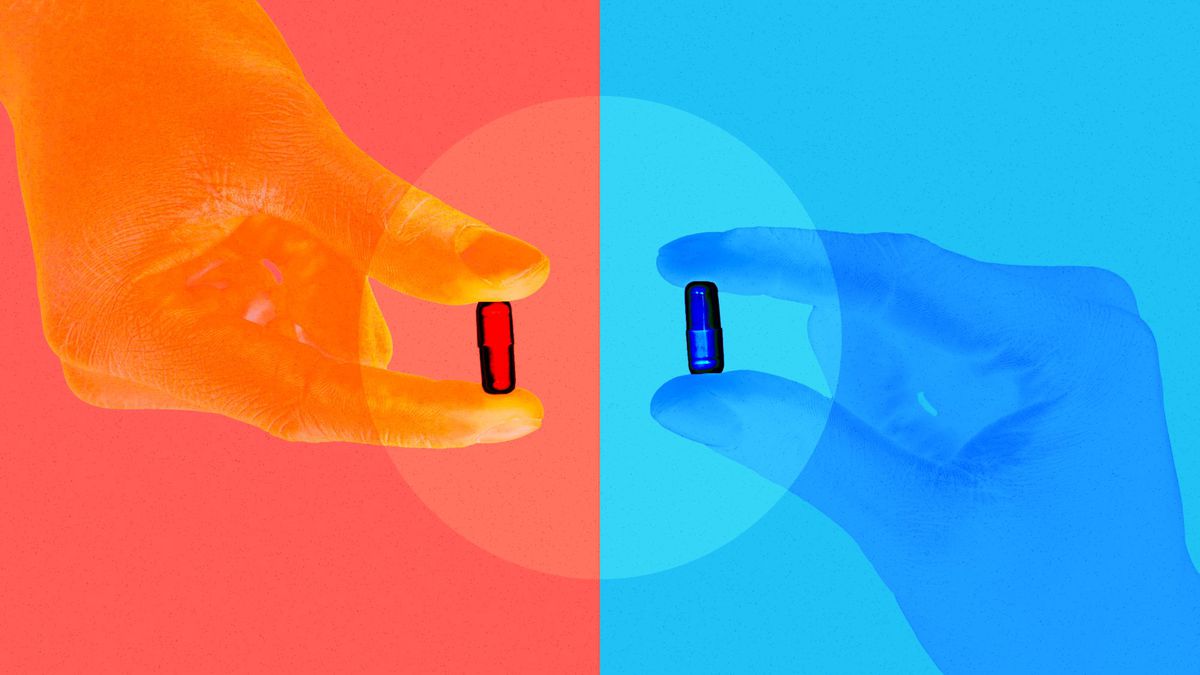https://medicineball-exercises.com/top/buy-generic-protonix-ca-no-prescription/

Who is eligible for Paxlovid and molnupiravir?
Pfizer's Paxlovid is for adults and children 12 and older (who weigh at least 40 kilograms, or just over 88 pounds). Merck's molnupiravir is for adults only, ages 18 and older.
Each medicine may be prescribed for COVID patients with "mild-to-moderate" coronavirus disease and who are at "high risk" of developing severe disease, meaning possible hospitalization or death.
While people of any age can become severely ill with COVID, older adults and those with underlying medical conditions may be at greater risk, notes the US Centers for Disease Control and Prevention (CDC). Likewise, people from certain racial and ethnic minorities and individuals with disabilities are more likely to have poorer outcomes, per the CDC.
One other caveat: the emergency use authorization (EUA) for Merck's molnupiravir stipulates that it's for people "for whom alternative COVID-19 treatment options authorized by the FDA are not accessible or clinically appropriate."
Peter Anderson, PharmD, professor in the Department of Pharmaceutical Sciences at the University of Colorado's Skaggs School of Pharmacy and Pharmaceutical Sciences, interprets that language to mean that the drug might be prescribed, say, if someone doesn't have access to monoclonal antibody therapy or cannot take Paxlovid because of a drug interaction. "The next-in-line is the Merck drug; that's kind of the way I see it," Anderson tells Health.
Rajesh Gandhi, MD, professor of medicine at Harvard Medical School and an infectious disease specialist at Massachusetts General Hospital, told reporters he thinks the FDA made "the right call" by positioning molnupiravir as an alternative to other treatments, such as Pfizer's Paxlovid, Gilead Sciences' infusion therapy remdesivir, and GlaxoSmithKline's monoclonal antibody therapy sotrovimab. That "seems right," he said, citing the drug's lower efficacy and certain safety concerns.
What are the benefits of Paxlovid and molnupiravir?
Until now, the options for treating COVID outside of the hospital have been quite limited. The antiviral drug remdesivir, an FDA-approved intravenous (IV) medication for hospitalized patients, (marketed by Gilead Sciences as Veklury) may be given to outpatients "off label."
A few monoclonal antibody treatments, namely Regeneron Pharmaceuticals' REGEN-COV (casirivimab and imdevimab), Eli Lilly and Company's bamlanivimab plus etesevimab, and GlaxoSmithKline's sotrovimab, are cleared for emergency use. While these lab-made antibodies can help a person's immune system recognize and respond to the virus, they're mostly delivered by intravenous infusion, and sometimes by injection, which makes them much less convenient than popping a pill.
What's more, federal health officials recently announced a pause on shipments of bamlanivimab, etesevimab, and REGEN-COV to health care providers. Citing FDA data, the US Department of Health and Human Services said these treatments are unlikely to be effective against the Omicron variant. Only sotrovimab "appears to retain activity" against the variant.
No wonder the recently announced EUAs for drugs that may be prescribed to non-hospitalized COVID patients come as welcome news. Pfizer's Paxlovid is the very first oral pill for treating the coronavirus infection, while Merck's molnupiravir gives doctors a backup alternative. Beyond expanding the pool of potential treatments, these oral medicines will make it easier to treat people at home.
"The fact that there's a pill that can be administered is much more convenient that having to administer infusions," Tom Gallagher, PhD, professor of microbiology and immunology at Loyola University Chicago in Maywood, Illinois, tells Health. "I would imagine compliance would be high because it's only a five-day course."
Along with vaccines, these new oral treatments have enormous potential to allow us to hopefully get back to normal life, Dr. Lemieux observed.
"They're a good tool; they're useful," says Gallagher, adding that "they're not a panacea."
So how do these COVID pills work?
Each treatment fights COVID infections in a distinctly different way.
Paxlovid is a three-pill regimen consisting of two nirmatrelvir tablets and one ritonavir (an HIV drug). The medicines work in tandem, like a one-two punch, to stop SARS-CoV-2 (the virus that causes COVID-19) from replicating in the body, thereby preventing severe disease.
Nirmatrlvir is an antiviral that blocks a protein that SARS-CoV-2 needs to replicate, per the FDA. And ritonovir boosts blood levels of nirmatrivir, says Anderson. Together, they work by stunting a key step in the life cycle of the virus. The drug combo hinders the ability of the virus to chop up long protein chains into individual enzymes needed for replication, and by blocking that process, "you stop the life cycle of the virus," says Anderson.
Molnupiravir, by contrast, inhibits genetic replication of the coronavirus. It does so by introducing genetic mutations that accumulate, Anderson explains. "When you build up so many mutations in the virus, you prevent it from being able to keep enough of its fitness to be viable anymore."
Eventually, with so many errors, the virus cannot sustain itself, adds Gallagher. "The instruction code for the virus will just be riddled with errors when this drug, molnupiravir, is taken."
But could that process breed mutant viruses that are even more dangerous? A recent Forbes blog authored by virologist William Haseltine, PhD, as well as an editorial from Stanford University biochemist and neurobiologist Michael Lin, MD, PhD, in the Washington Post, suggest that risk exists.
Gallagher, for one, acknowledges that the risk certainly exists, but he thinks it's a minor one because "the drug's going to introduce an astonishing number of changes that are probably going to be, as predicted, extinguished pretty quickly."
How effective are Paxlovid and molnupiravir?
The evidence we have so far comes from clinical trials, not real-world experience. The trials involved people with mild-to-moderate COVID symptoms who were at high risk of progressing to severe disease. In each instance, researchers examined the risk of being hospitalized or dying among patients taking the drug versus a placebo.
Taking Paxlovid within three days of symptom onset reduced the risk of hospitalization or death by 89% compared with placebo (and by 88% when taken within five days of developing symptoms), Pfizer reported.
Merck's trial of Molnupiravir reduced hospitalization and death by 30% versus placebo.
In terms of efficacy, "[Paxlovid], the combination nirmatrelvir and ritonavir seems to be superior, and we hope we'll have enough of that drug to get to all patients who need it, along with other frontline therapies like sotrovimab and remdesivir for outpatients," adds Dr. Lemieux, an infectious disease specialist at Massachusetts General Hospital.
What are the side effects of Paxlovid and molnupiravir?
Possible side effects of Paxlovid include impaired sense of taste, diarrhea, increased blood pressure, and muscle aches. But perhaps the bigger issue is that it can interact with other medicines you might be taking. The list of potential drug-to-drug interactions is lengthy, including certain blood thinners, antidepressants, and statin medicines, per the FDA.
Clinicians can find ways to manage these interactions, says Anderson, but they have to know what medicines you're taking—that means, if you are able to take this medication, sharing your medical history will be especially important.
For molnupiravir, side effects include diarrhea, nausea, and dizziness. And while no drug-to-drug interactions have been identified with Merck's drug, the FDA flags another concern: this COVID pill is not recommended for pregnant women. While it hasn't been studied in women during pregnancy, lab studies in pregnant animals suggest molnupiravir may cause harm to unborn fetuses. The FDA suggests that women discuss the potential benefits and risks of this drug with their doctor if they are pregnant and don't have other COVID treatment options.
Also important: Because it's not known whether molnupiravir can affect sperm, the FDA advises people who are sexually active with partners who can become pregnant to use a reliable form of birth control for at least three months after their final dose. "Males who want to start a family have to wait 90 days after they complete their course," Anderson points outs.
How do you take these oral drugs?
Both drug regimens last only five days. That's comparable to the short course of antibiotics your doctor might prescribe if you have bronchitis or a UTI, per recent therapeutic guidelines.
Paxlovid consists of two, 150-milligram tablets of nirmatrelvir and one 100-milligram of ritonavir taken twice-a-day for five days. That's a total of 30 pills. People on molnupiravir will take four 200-milligram capsules every 12 hours for five days, or 40 capsules in all.
Dr. Gandhi points out that the drugs work best when given within five days of symptom onset. The problem is that potential candidates for these drugs can't be treated until they get tested. "My concern is, are people going to be able to get tested and get results back within that five days? So I think treatment needs to go hand-in-glove with testing," he tells Health.
In addition, supplies of these medicines are limited at the moment. Pfizer expects to produce 180,000 courses of treatment this year, per the New York Times. The drugmaker recently said that it will ramp up production from 80 million to 120 million courses in 2022. It will provide some 10 million courses of treatment to the US government by the end of 2022. Merck, meantime, anticipates that it will produce 10 million courses of molnupiravir by the end of the year and at least 20 million by the end of 2022. It, too, has a contract with the government to supply for 3.1 million courses.
Can Paxlovid or molnupiravir prevent COVID?
Neither drug is authorized for preventing COVID or for staving off infection after you've been exposed to the virus. That's what vaccines are for.
"Right now they're only therapeutic: you get symptoms, and then you go to the doctor and get the drug," says Gallagher. But if COVID outbreaks persist, he doesn't rule out the possibility that such oral treatments might one day be used to limit the likelihood of infection in essential frontline workers.
Source: Read Full Article
